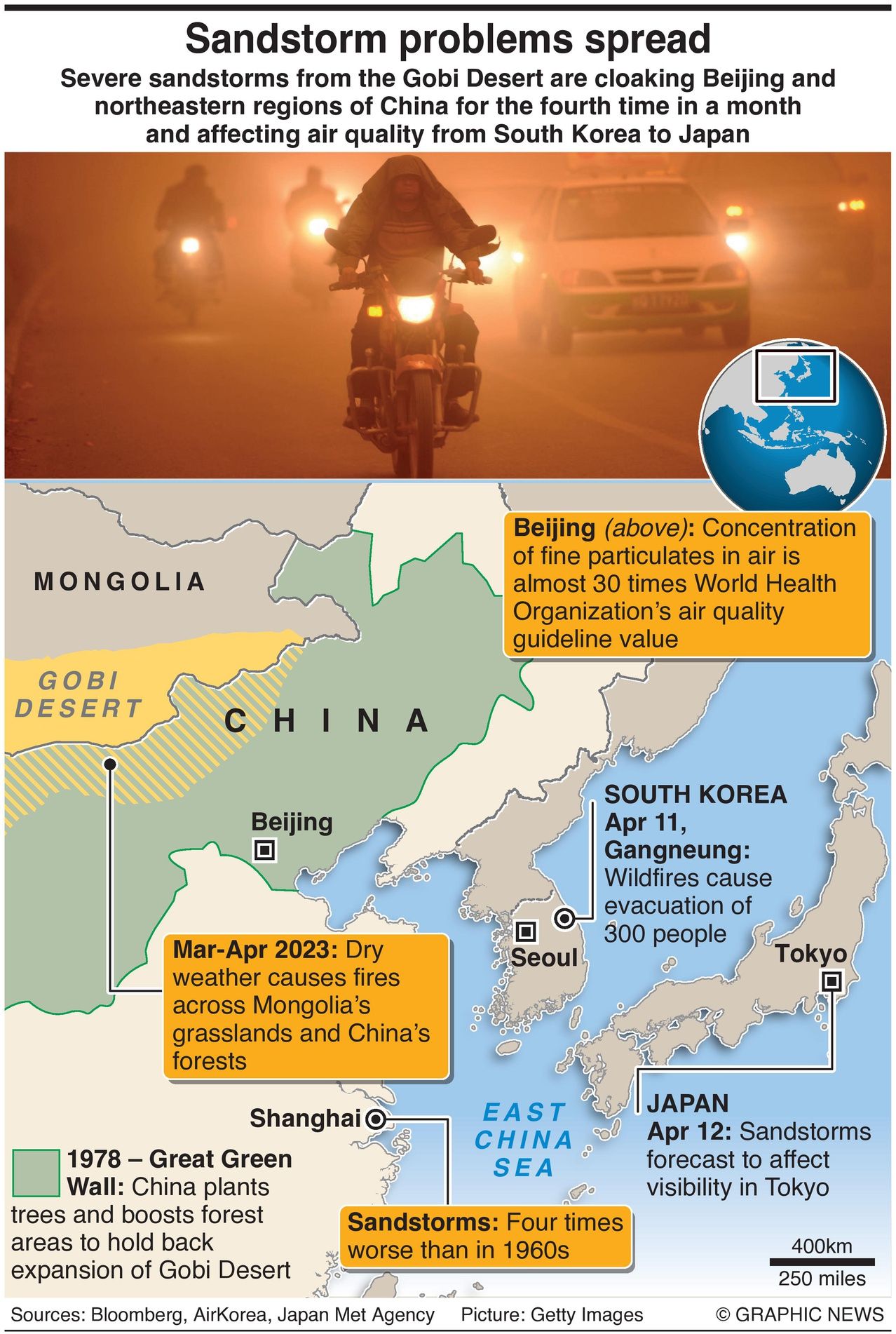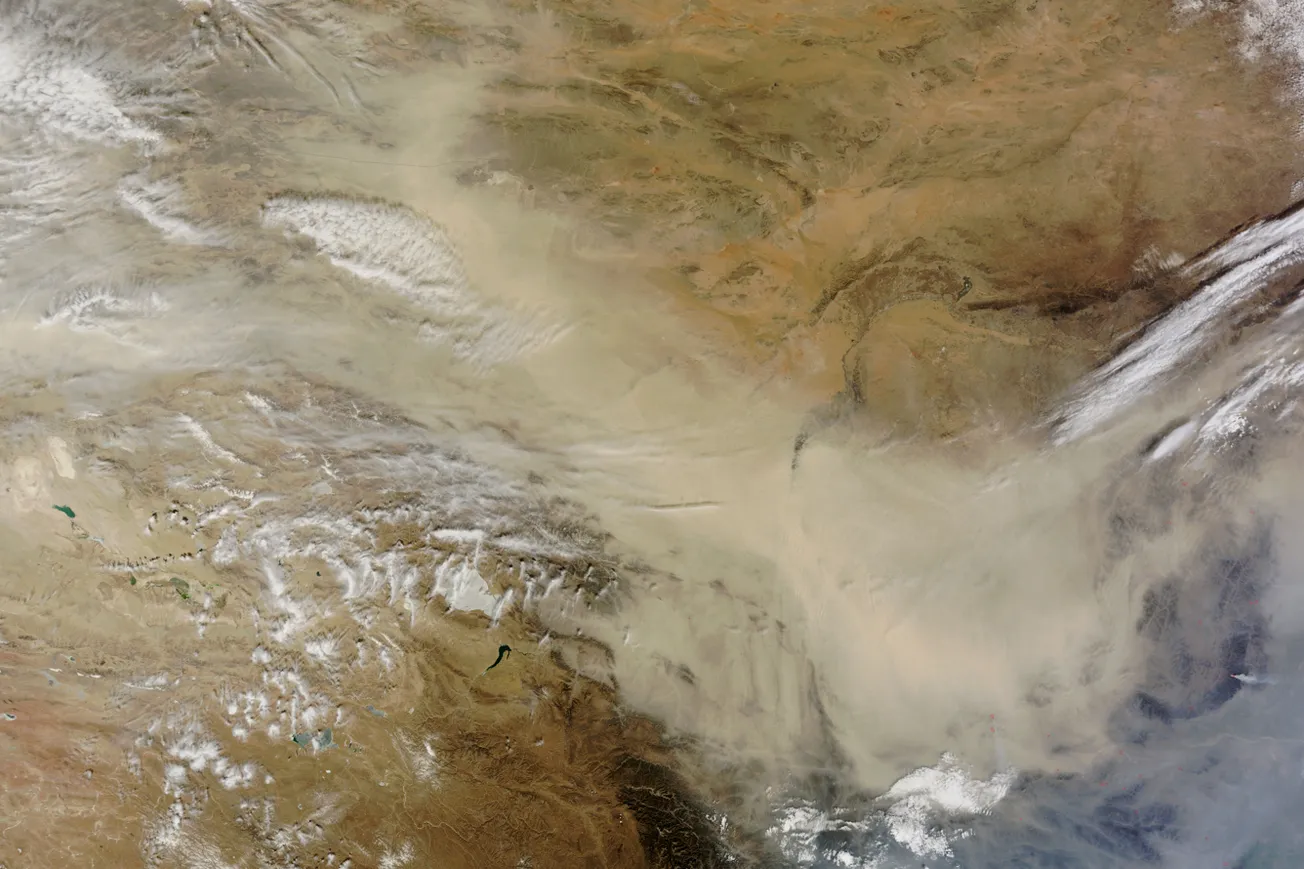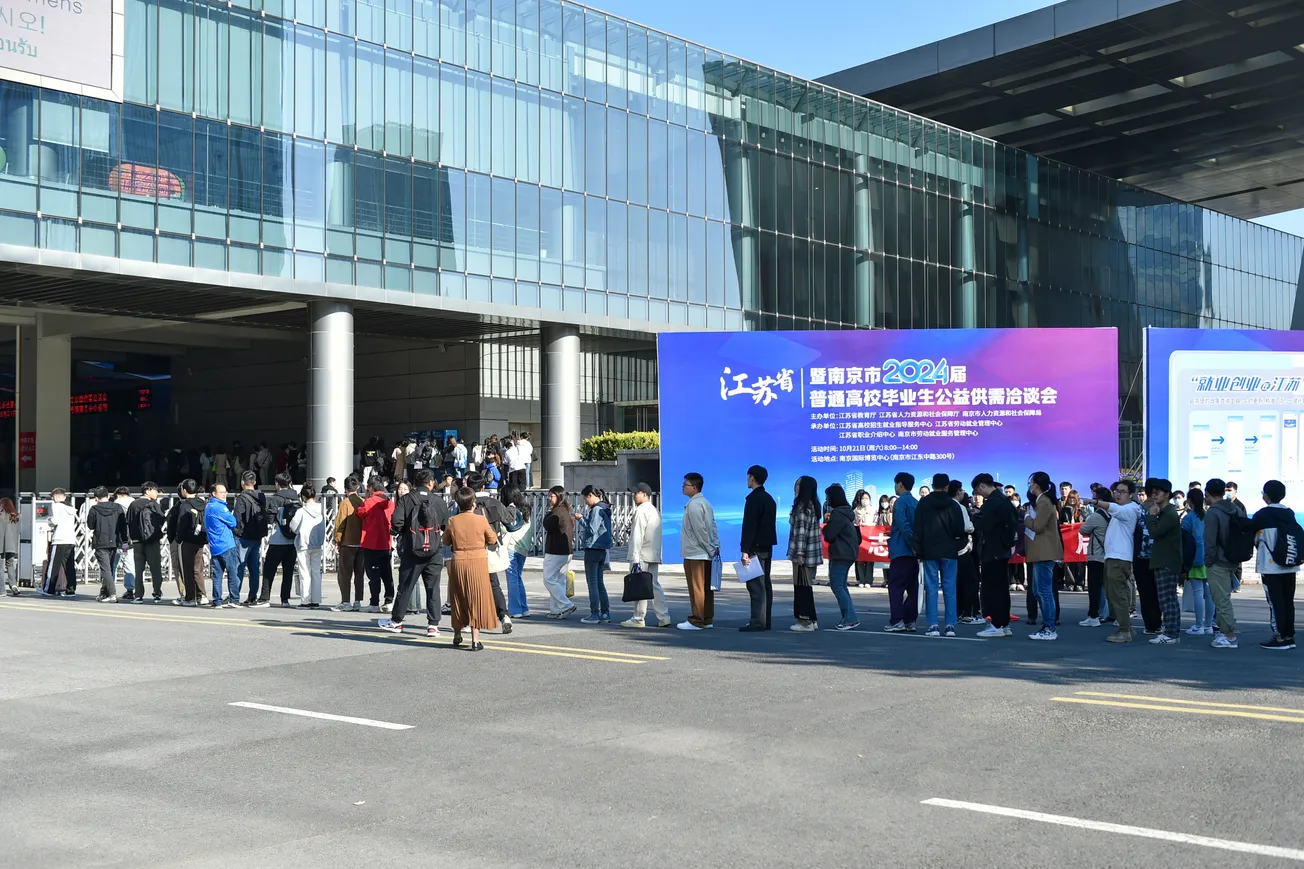Severe sandstorms from the Gobi Desert are cloaking Beijing and northeastern regions of China for the fourth time in a month and affecting air quality from South Korea to Japan.

According to the Municipal Ecological and Environmental Monitoring Center, the air quality index in China’s capital Beijing was severely polluted on Monday.
Concentrations of PM10 particles exceeded 1,321 micrograms per cubic meter -- almost 30 times the World Health Organization’s daily average guideline of 45 micrograms per cubic meter.
PM10 are particles less than 10 micrometers in diameter and can irritate the eyes and nose, travel to the lungs, and cause serious health problems. Of these, particles less than 2.5 micrometers in diameter, also known as fine particles or PM2.5, pose the most significant health risk.
Smog and grey clouds continued to envelop Beijing on Tuesday morning.
Fine dust particles from the Gobi Desert have also been increasing in South Korea -- and could reach “very unhealthy” levels in Seoul as soon as Tuesday afternoon -- according to Air Korea, part of the nation’s environment ministry.
Forecasters say the sandstorms will reach Japan on Wednesday, affecting visibility in the central region that includes Tokyo, according to the Japan Meteorological Agency.
The severity of this year’s storms is due to a hot early March in northern China, which rapidly melted permafrost and frozen ground. Strong winds then swept up loose sand, making the storm particularly damaging.
An official at China’s Ministry of Ecology and Environment told Reuters that the number of sandstorms was now four times higher than in the 1960s due to rising temperatures and lower precipitation in the deserts of northern China and Mongolia.









